Common Garden Pests & How to Deal with Them
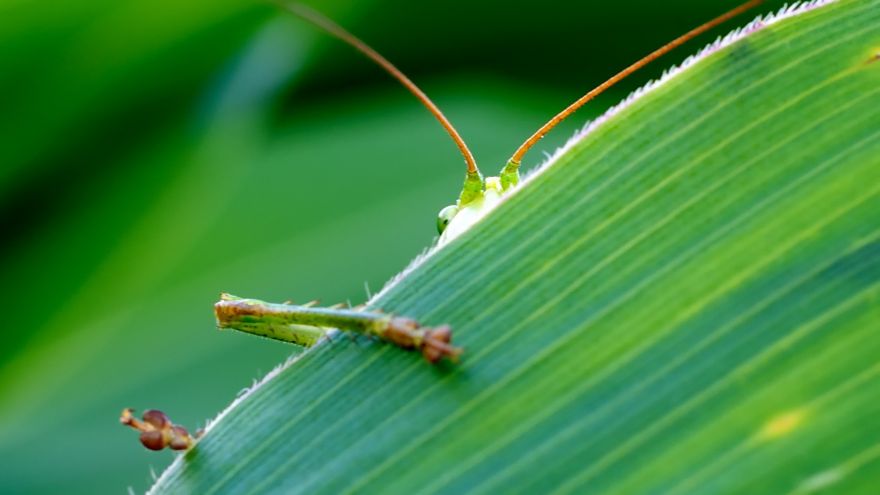 Common Garden Pests & How to Deal with Them
thegearhunt.com
Common Garden Pests & How to Deal with Them
thegearhunt.com
Intelligent gardeners know the importance of keeping a garden pest free. Pests can turn a gorgeous, healthy garden into a gnawed-on, damaged mess. There have even been reports stating that rodents, by themselves, are responsible for the destruction of major food crops, thereby ruining the supply of food for about 200 million humans each year.
Pests are creatures that are not invited. They take advantage of the open source of food that your garden represents and do everything in their power in order to get a bite of the delicious, healthy plants that you have so painstakingly grown. You might think that these critters are just eating your plants and destroying your garden, there is a bit more to it. Pests can actually make your plants sick, and this can reduce the overall yield of the garden because it can affect plants that bear fruits and vegetables.
There are quite a few different types of pests that get into gardens. They can include things like moths, bugs, mites, rodents, weeds, insects, bacteria, fungi, and more. You can notice them in a couple of ways. You may see tiny little destroyers crawling all over the plants in the garden, or you might just be able to see the damage they have wrought.
Pests can destroy a garden in ways that can’t be missed, regardless of the size of the garden. Pest control should be included on your daily list of garden chores and you should have at least a basic knowledge of the ones that are frequently found.
Here are a few of the pests you might want to know about as well as how to deal with them.
Aphids
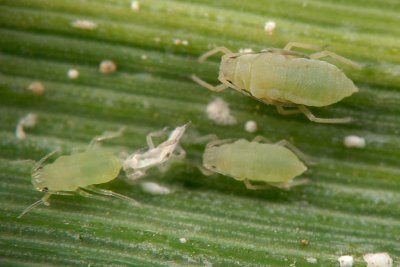 These are minuscule white bugs that only grow to about ¼ of an inch. They have long antennae and their bodies are sort of pear-shaped. You can find these critters in nearly every garden because they can tolerate all sorts of weather conditions.
These are minuscule white bugs that only grow to about ¼ of an inch. They have long antennae and their bodies are sort of pear-shaped. You can find these critters in nearly every garden because they can tolerate all sorts of weather conditions.
These little critters feed on things like melon plants, green peaches, potatoes, cabbage, and beans but will most often just indiscriminately graze their way through a garden. There are quite a few species of them. Some of them will go for the leaves of plants, others might prefer the actual stems. Some of them even go for the flowers and buds.
Getting Rid of Them
The bodies of the aphids are lightweight. This means that you can remove them from the plants by simply spraying cool water on the parts of the plants that they are feasting on. You can also remove them by pouring flour on the plants. This is because it makes them lose their grip on the plants. Garlic is another natural repellent because of its strong odor.
Tomato Hornworms
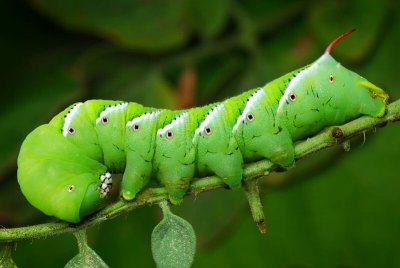 Those hulking caterpillar looking things crawling all over your tomato plants are called tomato hornworms. They tend to be fat, large, and green and can be found in nearly every garden where there are tomato plants. They can inflict a drastic amount of damage, which is why they should be eliminated quickly.
Those hulking caterpillar looking things crawling all over your tomato plants are called tomato hornworms. They tend to be fat, large, and green and can be found in nearly every garden where there are tomato plants. They can inflict a drastic amount of damage, which is why they should be eliminated quickly.
Aside from the tomato plants they are named for, they also feed on things like eggplants, potatoes, and peppers. At times, they can be difficult to spot because their green bodies camouflage them against the green of the plants they feed on.
Getting Rid of Them
Tomato hornworms aren’t dangerous to humans. You can actually just pick them off your plants. If you do that, you can simply squash them. You can also kill them by dropping them into soapy water.
If your infestation is one that is large, you can use something called bacillus thuringiensis to poison their stomachs and kill them instantly.
Cynipid Wasps
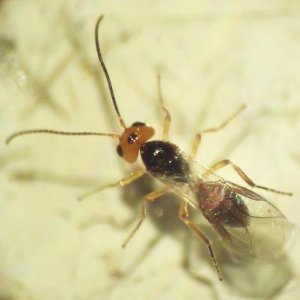 The mature members of this species can be as small as 1/8 to ¼ of an inch in length and they tend to have a sort of hunchback appearance. The males are black, and the females are a sort of reddish brown.
The mature members of this species can be as small as 1/8 to ¼ of an inch in length and they tend to have a sort of hunchback appearance. The males are black, and the females are a sort of reddish brown.
The females tend to be more dangerous because of the fact that they will lay their eggs on the bud of a leaf and within about 2 weeks, the eggs hatch and the emerging babies will feed right on the cane tissues of whatever plant they are on.
If you notice that the leaves of your plants are growing sort of oddly, this is more than likely the result of these wasps. These growths can resemble the thorns of roses and will continue to develop until you actually prune them off.
Getting Rid of Them
The very best way to rid your garden of these pests is by pruning damaged parts of leaves so that the spread will be halted. Since these critters tend to prefer rose bushes, if you want your roses to look good, you need to keep an eye out for these pests.
Moths
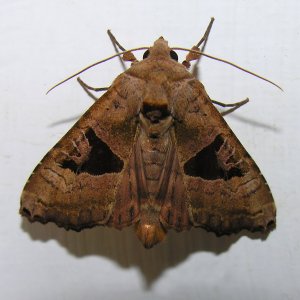 These are generally found in those gardens that are not exactly tidy and neat. They will shelter under dirty old pots, broken pieces of wood, fallen branches, and other items that have been discarded. They can be an issue because they are difficult to control… especially when you are trying to grow cabbage.
These are generally found in those gardens that are not exactly tidy and neat. They will shelter under dirty old pots, broken pieces of wood, fallen branches, and other items that have been discarded. They can be an issue because they are difficult to control… especially when you are trying to grow cabbage.
Moths will eat anything that is green, but typically they will prefer cabbage. If they are given the chance, they can and will destroy your entire crop. Signs of them can be small changes with the leaves. This small bit of damage can quickly spread if not nipped in the bud.
Getting Rid of Them
An easy way to get rid of moths is to get rid of all of the garbage, fallen branches, and other detritus in the garden. Not only will this get rid of the moths, it will also be beneficial to the entire garden. This is due to the fact that other pests can also find shelter in the mess. Additionally, moths will lay their eggs on your plants. Their eggs will be in a sort of sac. You can kill the eggs simply by putting them in water that is warm.
Grasshoppers
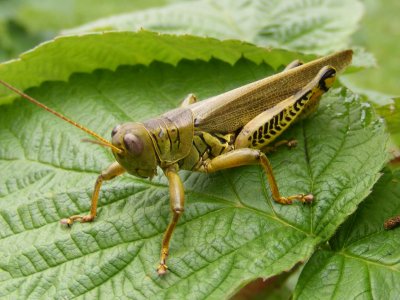 Grasshoppers can be a massive nuisance in any garden and they can also move quickly through one. Because of this, it is difficult to get rid of them by hand, and they are able to cause a LOT of damage before you can get rid of them.
Grasshoppers can be a massive nuisance in any garden and they can also move quickly through one. Because of this, it is difficult to get rid of them by hand, and they are able to cause a LOT of damage before you can get rid of them.
If leaves on your plants are disappearing as the days go by, the reason might be grasshoppers. They will feed on the leaves of any plant that is edible.
Getting Rid of Them
One good way to wipe them out and to keep your plants protected is to use something called Hot Pepper Wax Spray. This also works on pests like scale bugs, parasites, moths, and aphids. You can get it at most commercial garden stores or you can make your own with cayenne peppers. While this spray is harmless for humans, it is effective when it comes to repelling many different species of insects.
That being said, it will only be effective for a couple of weeks. Because of this, you will need to respray every third week.
Scale Bugs
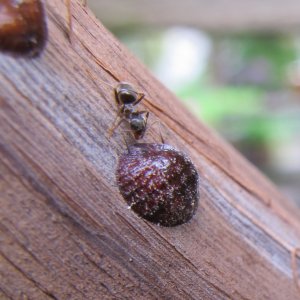 It can be difficult to spot these critters in your garden due to the fact that they appear more like a disease than they resemble bugs. They get into gardens when the climate is dry and warm. These critters need to be done away with because they strip the plants of critical nutrients when they suck out the sap. They are brown and have a shell-like appearance. They tend to be oval shaped and are tiny.
It can be difficult to spot these critters in your garden due to the fact that they appear more like a disease than they resemble bugs. They get into gardens when the climate is dry and warm. These critters need to be done away with because they strip the plants of critical nutrients when they suck out the sap. They are brown and have a shell-like appearance. They tend to be oval shaped and are tiny.
There are also different types. Some of those types are:
- Soft Scale – this type produces honeydew in large amounts. The honeydew is a sort of substance that works as a magnet for different insects. It also works as a type of black fungus that is restrictive regarding photosynthesis.
- Mealybugs – These tend to appear in a powdery white form and will excrete honeydew on stems and leaves. One mealybug might not be too dangerous, but they tend to multiply rather quickly. When they multiply, the task of controlling them can become daunting.
- Armored Scale – This one doesn’t have anything to do with honeydew. If you notice scale bugs but don’t notice any honeydew on your plants, they are more than likely this type of bug.
If you notice that the leaves of your plants are turning yellowish in color and falling off the plants, it is probably due to scale bugs. You might also notice a white residue on the leaves that have been fed on.
Getting Rid of Them
When it comes to getting rid of scale bugs, the best ways are by pruning, with neem oil, and with alcohol.
If just a tiny part of a plant has been affected by the bugs, you can just prune that part to keep the issue from spreading. If you do this, throw that part away quickly so that the scales won’t jump to another part of the plant. This is a strategy that works best when you first notice the problem. Pruning the plant will keep the issue from spreading to plants beside them. One more reason to prune them is because the bugs will drop to the ground where they will be fed on by insects like ladybugs. They cannot fly so they can’t escape.
If there are only a few of them, you can also hand pick them from the plants. Just rub the plant to find out if they will drop to the ground. When they don’t drop, pick them off by hand and put them on a small cloth. Get rid of that cloth far away from the garden.
Alcohol will also work. Just dab the scales with a swab or cloth that has been dipped in alcohol. Neem oil is another option. This is a strategy that works best when large parts of your plants or the garden are affected.
Bronze Stink Bug
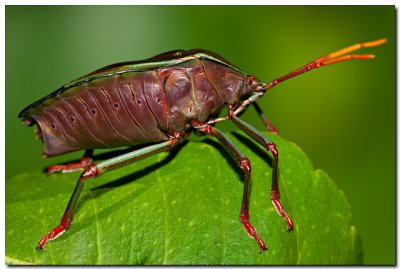 This bronze bug, which is simply known as the stink bug, threatens many gardens. They get their name from the stinky repellent they produce that keeps common predators away from them.
This bronze bug, which is simply known as the stink bug, threatens many gardens. They get their name from the stinky repellent they produce that keeps common predators away from them.
It is critical to keep a garden free from this pest because they can and will drastically reduce your yield. They can be found in gardens that have a lot of vegetation and they prefer weather that is warm and dry. Females will lay their eggs on your plants and then feed on the juices of the plant. Both genders are fond of things like peppers, corn, beans, and tomatoes.
This bug tends to hide in debris, so keeping your garden neat and tidy can help in their prevention. They thrive where there are weeds and can also be prevented by using a thick layer of mulch.
From leaves to flowers and seeds to fruits, these bugs will eat everything. Search for damage on these parts of your plants when you suspect they are in the vicinity.
Getting Rid of Them
Stink bugs adore light. They tend to make their way to their preferred plants early in the morning. To get rid of them, you can use mineral clay. Just make up a solution of this substance and water and then spray it on the plants to keep them away. This solution will not harm your plants, but it will keep the bugs away and keep them from both feeding and laying eggs in your garden. If you want it off the plants when you are sure the pests are gone, just rinse them off with water. Please note that while this solution will run them off, it won’t kill them. Once they have discovered that your garden is a good source of food, they will return again and again.
Another option to getting rid of them is to invite some of their natural predators, such as flies, spiders, birds, toads, and more. Again, these methods should be viewed as short-term solutions. If you find that you just can’t get rid of them, you might want to turn to using pesticides. Things like rotenone, insecticidal soap, pyrethrin, and neem oil will kill them.
Viburnum Leaf Beetle
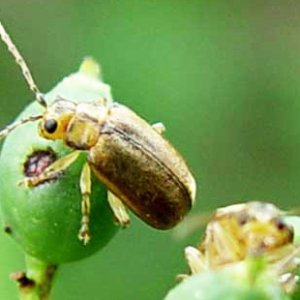 Plants in the viburnum family come in a variety of colors that range from yellow to red to white. They work well when it comes to making your garden pleasing aesthetically. That being said, this gorgeous plant can easily be destroyed when your garden also has this type of beetle.
Plants in the viburnum family come in a variety of colors that range from yellow to red to white. They work well when it comes to making your garden pleasing aesthetically. That being said, this gorgeous plant can easily be destroyed when your garden also has this type of beetle.
These beetles can quickly skeletonize the plants and transform them into a heap of dying plants. The beetles are around 6 ½ mm in length and their bodies are a golden-brown color. They are mainly found in the eastern part of the US.
These beetles are dangerous due to the fact that it only takes a few days for them to consume a viburnum plant. They begin with the lower branches and work their way up.
If you think these beetles have invaded your garden, you will need to check the leaves of your viburnum plants. If you notice holes in the leaves, lower branches and stems, you probably have them.
Getting Rid of Them
One of the worst things about these pests is that they lay eggs and multiply quickly. Because of this, you should worry about the eggs first and then focus on the live pests.
Look on the bottom of the leaves for any eggs. If they are there, prune those leaves as quickly as possible. However, remember that pruning won’t solve the entire issue. You will also need to spray the plants with insecticide to kill the live pests.
Cutworms
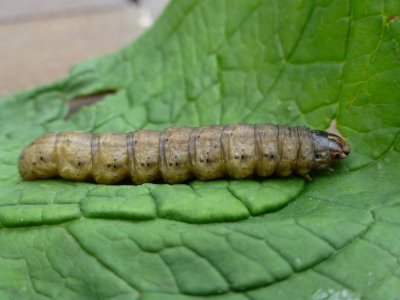 If you begin to notice that the stems of your plants seem to be breaking off at ground level, the culprit is more than likely cutworms. They make cuts on plant stems that effectively kill them. They are extremely dangerous to a garden and because of this, they need to be eliminated as soon as possible.
If you begin to notice that the stems of your plants seem to be breaking off at ground level, the culprit is more than likely cutworms. They make cuts on plant stems that effectively kill them. They are extremely dangerous to a garden and because of this, they need to be eliminated as soon as possible.
The first thing that you will need to do is to get all of the dead material from plants out of there. Cutworms tend to lay their eggs on dying and/or dead plants, along with laying them on any other sort of debris in gardens. Making sure that your garden is tidy and neat will go a long way toward preventing their eggs.
If you notice wounds on your plants that resemble the makes of scissors at the bottom of their stems, they are more than likely from cutworms. The cuts tend to be rather sharp and tend to be at the very bottom of the plants.
Getting Rid of Them
You can use synthetic pesticides to rid your garden of these pests. That said, because they prefer vegetable plants, you might not want to use pesticides on them because they can contaminate your crop.
If this is the case, you can also use organic pesticides. Soapy water is also good at keeping these pests at bay.
The Verdict
These are some of the common pests that can be found in gardens.
The key to controlling pests is to keep your garden tidy and neat at all times, a reduction in moisture, using methods to block them from getting into your garden to begin with and getting the issue under control before they multiply. With a bit of vigilance and additional caution, you can enjoy a pest-free, bountiful harvest every season.
Sources
- YouTube, How to Identify & Eliminate Common Garden Pests
- HGTV, 16 Common Garden Pests
- Countryfarm Lifestyles, Images of Common Garden Pests, Bugs and Natural Remedy Solutions
- Planet Natural, Garden Pests
















